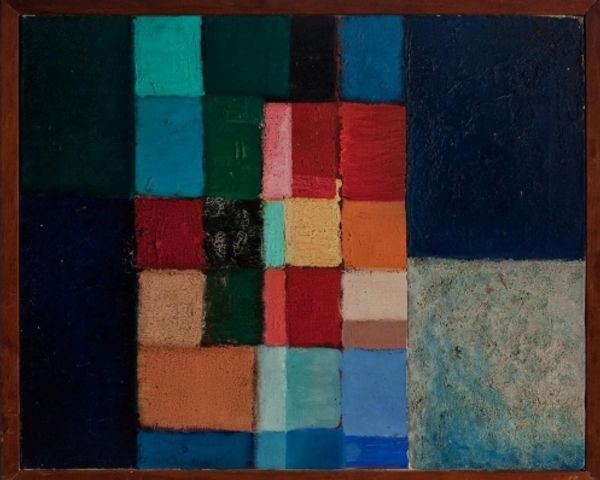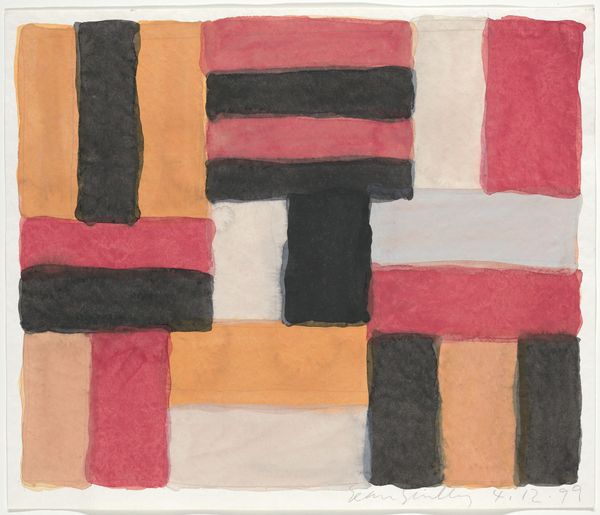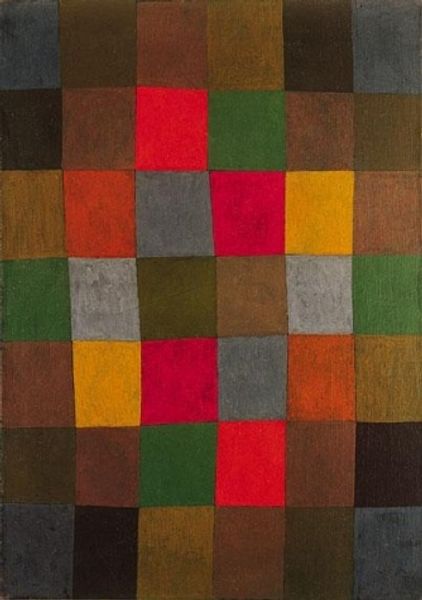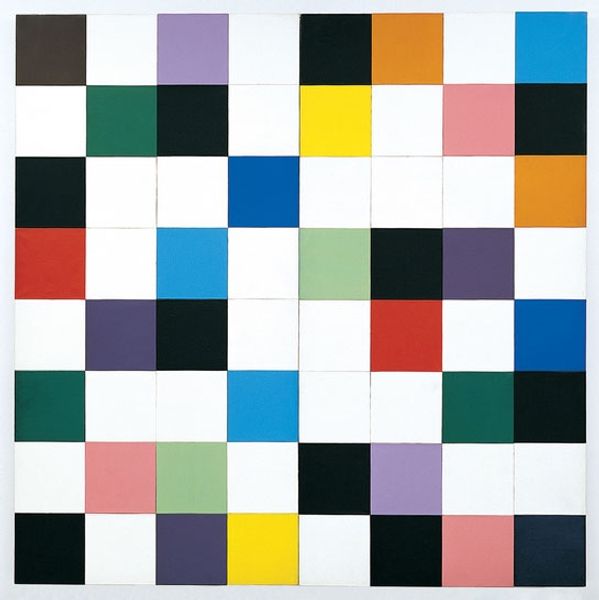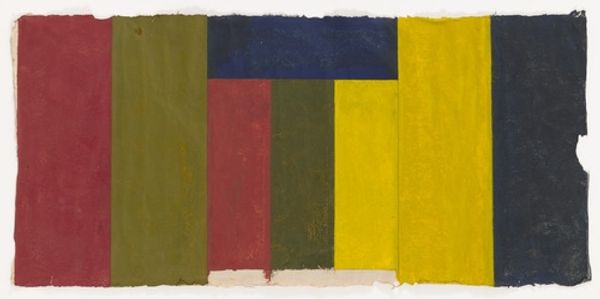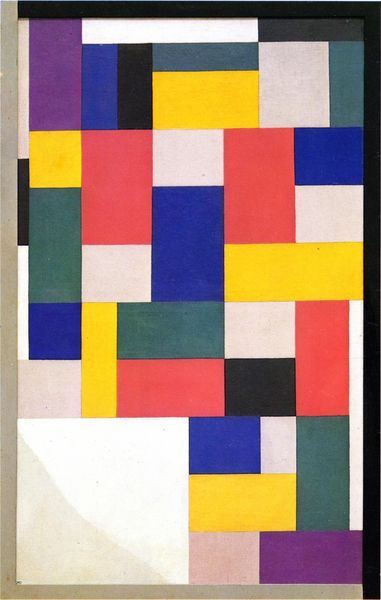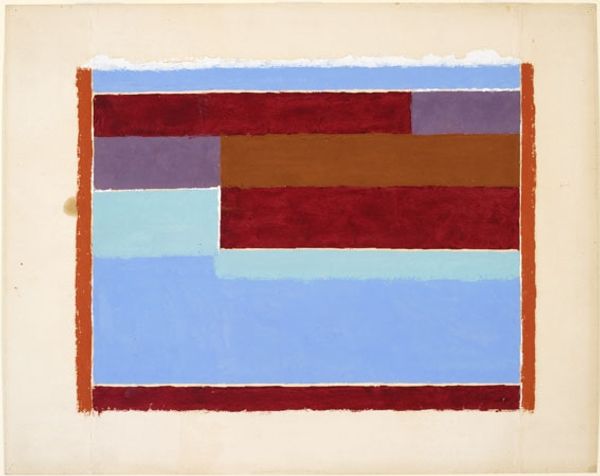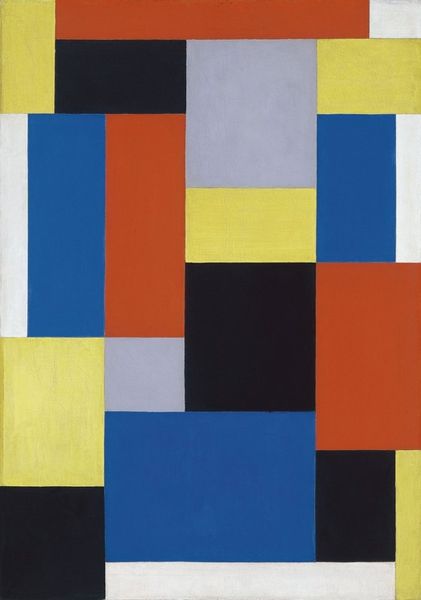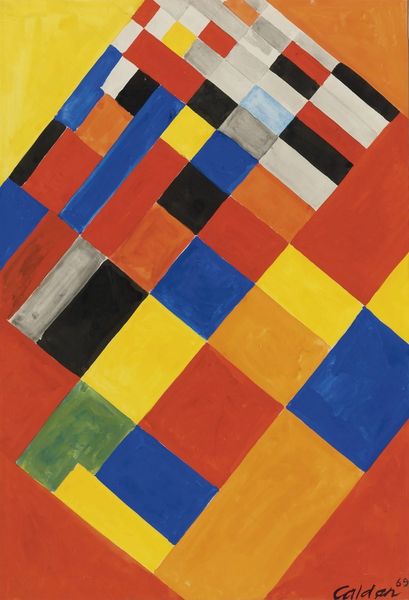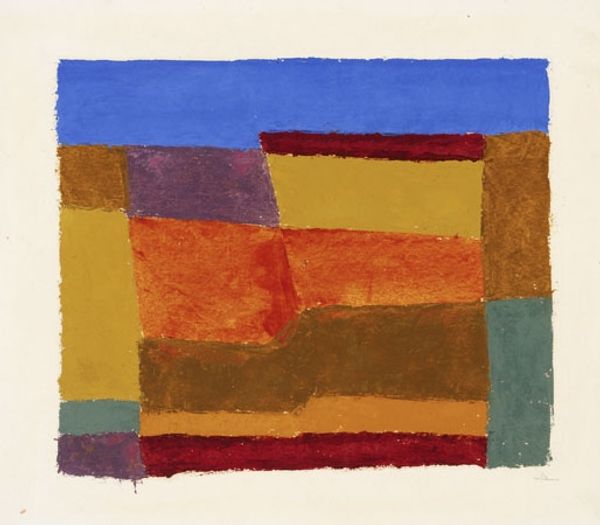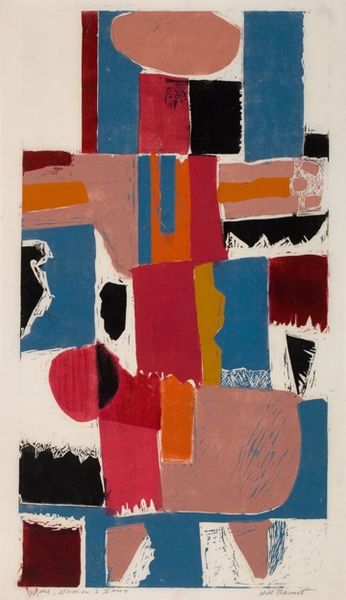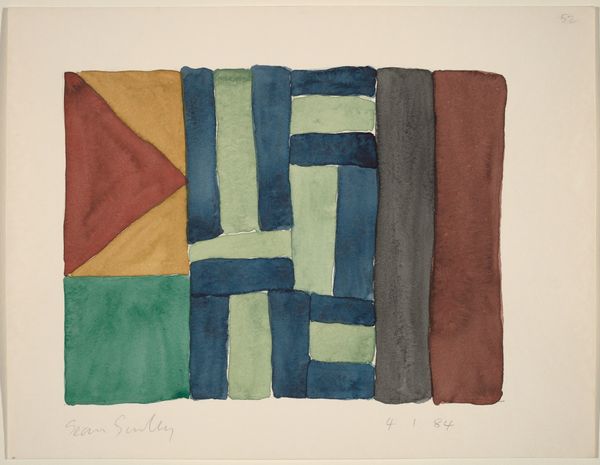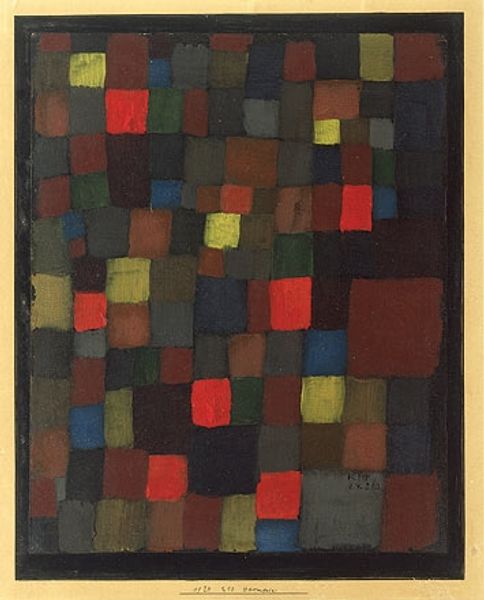
painting, oil-paint
#
abstract painting
#
painting
#
oil-paint
#
german-expressionism
#
abstract
#
geometric pattern
#
geometric
#
geometric-abstraction
#
abstraction
#
bauhaus
#
modernism
Copyright: Public Domain: Artvee
Curator: Paul Klee’s "Color chart ‘Qu 1’," dating from 1930, presents an intriguing geometric abstraction. Editor: My first impression is of childlike blocks, almost like a sampler—bright, elemental colors fighting to hold the composition together. Curator: It’s fascinating to consider how Klee, associated with both the Bauhaus and German Expressionism, is playing with standardization here. We see a grid, ostensibly a 'chart', yet the handmade texture of the oil paint subverts pure industrial replication. What does it mean when a 'chart' is so visibly crafted? Editor: It certainly challenges notions of objective color theory. Notice how the varying thickness of the oil alters each shade? The material’s very application transforms our perception. Is this a color study or a comment on the impossibility of absolute uniformity, of standardizing color itself? Curator: Exactly! Klee was deeply interested in the process of art-making. The visible brushstrokes and the subtle variations between the squares reveal his hand, emphasizing labor and the tangible reality of the materials. The oil paint itself becomes a carrier of meaning, pushing against the depersonalized aesthetics often associated with industrial design. Editor: It’s hard to ignore that one slightly larger, stark white square. Semiotically, it fractures the system, disrupting the potential for perfect order. Is it a flaw, a statement, a question? Curator: It raises all of those questions, I think. And let’s remember the socio-economic context of 1930. As mass production surged, Klee seems to use abstraction not as pure escape, but to explore the tensions between mechanization and human creativity, between the ideal and the real. Editor: So, we move from the apparent simplicity of squares into a complex dialogue about production, material transformation, and the instability of established forms. Curator: Precisely, seeing beyond the surface into the web of creative choices, and broader social forces that shaped Klee's practice.
Comments
No comments
Be the first to comment and join the conversation on the ultimate creative platform.
